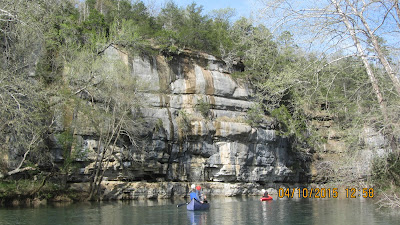 |
| Buffalo National River Between Ozark and Pruitt (c) Lisa R. Pruitt 2015 |
Boyce Upholt's story, "What Makes the Buffalo River the Jewel of the Ozarks?," is a profile of the nation's first and only national river at the 50th anniversary of its founding. Along the way, you get a few visual and verbal vignettes of Newton County, where I grew up, along with two photos of Jasper, the county seat where I went to school. Photos accompanying the story are by Rory Doyle. Photos shown on this post were taken by me when I floated the river with my mother and my son in 2015.
Here's the lede for the Smithsonian Magazine story:
 |
| Three Generations of Pruitts at Pruitt, Arkansas, BNR |
If smoothed out flat, the rough mountainous terrain of Newton County, Arkansas, would prove “bigger’n the whole state of Texas,” a local resident once proclaimed to a folklorist. That may be an exaggeration, but the wrinkles of the topography have certainly kept this corner of the Ozarks quiet. Fewer than 8,000 people live scattered across Newton County’s 820 square miles. The place is mostly known for a waterway. Near the county’s western border, a trickling stream grows into the Buffalo River.
For a long time Arkansans couldn’t agree on what the river should be used for, and some even fought over it. In the 1940s, with the local timber felled and the zinc and lead operations floundering, state tourism officials started promoting Newton County as a wilderness destination. The county was home to nearly half of the Buffalo River watershed, and outdoors enthusiasts considered the mountain stream one of the finest in the region, if not the country; it was a rare, free-flowing waterway, perfect for rafting or canoeing. Some local leaders wanted to turn the watershed into a national park. Others wanted to dam the river, which could provide hydroelectric power and form the kind of placid lake that had spurred the development of lodges, restaurants and retirement homes elsewhere in the Ozarks.Upholt further details the history of the river's designation--including local resistance. He also talks about the industrial hog farm built in the watershed in 2013, which the state eventually bought out and closed in 2019. I wrote about that matter in the Journal of Rural Studies in 2016, and you'll find many posts about it here on Legal Ruralism.
 |
| Buffalo National River Near Ozark Campground (c) Lisa R. Pruitt 2015 |



No comments:
Post a Comment